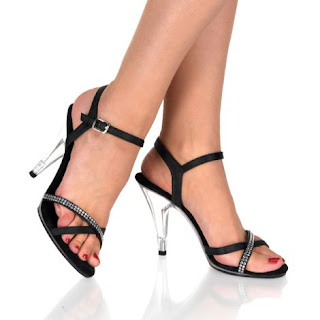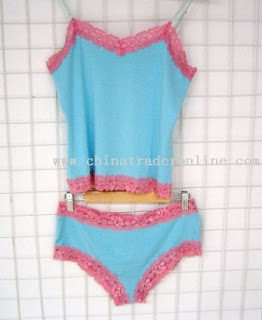Lipstick is a cosmetic
product containing pigments, oils, waxes, and emollients that applies color, texture, and
protection to the lips. Many varieties of lipstick exist. As with
most other types of makeup, lipstick is typically, but not exclusively, worn by
women. The use of lipstick dates back to ancient times.
History
Ancient Mesopotamian women were possibly the first women to invent and wear lipstick. They crushed gemstones and used them to decorate their lips. Women in the ancient Indus Valley Civilization applied lipstick to their lips for face decoration. Ancient Egyptians extracted red dye from fucus-algin, 0.01% iodine, and some bromine mannite, which resulted in serious illness. Cleopatra had her lipstick made from crushed cochineal insects, which gave a deep red pigment, and ants for a base. Lipsticks with shimmering effects were initially made using a pearlescent substance found in fish scales.During the Islamic Golden Age the notable Arab Andalusian cosmetologist Abu al-Qasim al-Zahrawi (Abulcasis) invented solid lipsticks, which were perfumed sticks rolled and pressed in special molds, and he described them in his Al-Tasrif.In Medieval Europe, lipstick was banned by the church and was thought to be used as an 'incarnation of Satan', cosmetics being 'reserved' for prostitutes.
England
Lip colouring started to gain some popularity in 16th century England. During the reign of Queen Elizabeth I bright red lips and a stark white face became fashionable.By that time, lipstick was made from a blend of beeswax and red stains from plants. Only upper class women and male actors wore makeup.In 1770 a British law was proposed to the Parliament that a marriage should be annulled if the woman wore cosmetics before her wedding day
Throughout most of the 19th century the obvious use of cosmetics was not considered acceptable in Britain for respectable women, and it was associated with marginalized groups such as actresses and prostitutes. It was considered brazen and uncouth to wear makeup.In the 1850s, reports were being published warning women of the dangers of using lead and vermillion in cosmetics applied to the face. By the end of the 19th century, Guerlain, a French cosmetic company, began to manufacture lipstick. The first commercial lipstick had been invented in 1884, by perfumers in Paris, France. It was covered in silk paper and made from deer tallow, castor oil, and beeswax.Before then, lipstick had been created at home.Complete acceptance of the undisguised use of cosmetics in England appears to have arrived for the fashionable Londoner at least by 1921.
United States
In the 19th century, lipstick was colored with carmine dye. Carmine dye was extracted from cochineal, scale insects native to Mexico and Central America which live on cactus plants. Cochineal insects produce carminic acid to deter predation by other insects. Carminic acid, which forms 17% to 24% of the weight of the dried insects, can be extracted from the insect's body and eggs. Mixed with aluminum or calcium salts it makes carmine dye (also known as cochineal).This lipstick did not come in a tube; it was applied with a brush. Carmine dye was expensive and the look of carmine colored lipstick was considered unnatural and theatrical, so lipstick was frowned upon for everyday wear. Only actors and actresses could get away with wearing lipstick. In 1880, few stage actresses wore lipstick in public. The famous actress, Sarah Bernhardt, began wearing lipstick and rouge in public. Before the late 19th century, women only applied makeup at home. Bernhardt often applied carmine dye to her lips in public.
In the early 1890s, Carmine was mixed with an oil and wax base. The mixture gave a natural look and it was more acceptable among women. At that time, lipstick was not sold in screw up metal tube; it was sold in paper tubes, tinted papers, or in small pots. The Sears Roebuck catalog first offered rouge for lips and cheeks by the late 1890s.
By 1912 fashionable American women had come to consider lipstick acceptable, though an article in the New York Times advised on the need to apply it cautiously.
By 1915, lipstick was sold in cylinder metal containers, which had been invented by Maurice Levy. Women had to slide a tiny lever at the side of the tube with the edge of their fingernail to move the lipstick up to the top of the case. In 1923, the first swivel-up tube was patented by James Bruce Mason Jr. in Nashville, Tennessee. As women started to wear lipstick for photographs, photography made lipstick acceptable among women. Elizabeth Arden and Estee Lauder begin selling lipstick in their salons.
During the Second World War, metal lipstick tubes were replaced by plastic and paper tubes. Lipstick was scarce during that time because some of the essential ingredients of lipstick, petroleum and castor oil, were unavailable.:50 World War II allowed women to work in engineering and scientific research, and in the late 1940s, Hazel Bishop, an organic chemist in New York and New Jersey, created the first long lasting lipstick, called No-Smear lipstick. With the help of Raymond Specter, an advertiser, Bishop's lipstick business thrived.
Another form of lip color, a wax-free semi-permanent liquid formula, was invented in the 1990s by the Lip-Ink International company. Other companies have imitated the idea, putting out their own versions of long-lasting "lip stain" or "liquid lip colour."





































































